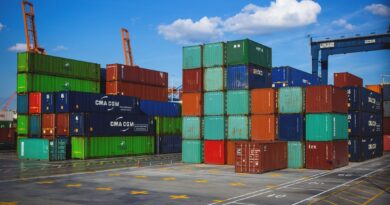The Canadian Dollar in a Post-Pandemic World: Challenges and Opportunities
The COVID-19 pandemic has left an indelible mark on the global economy, reshaping trade patterns, altering consumer behavior, and redefining the dynamics of international finance. For Canada, a nation deeply integrated into the global economic landscape, the impact has been significant. This article delves into the challenges and opportunities that lie ahead for the Canadian dollar (CAD) as the country navigates a post-pandemic world. From economic recovery and changing trade dynamics to the role of fiscal policies, we explore the multifaceted factors that will influence the trajectory of the loonie.
Economic Recovery and the Canadian Dollar
- GDP Contraction and Recovery: The COVID-19 pandemic led to a contraction in Canada’s Gross Domestic Product (GDP), reflecting the widespread economic disruption caused by lockdowns and restrictions. As the nation focuses on economic recovery, the performance of the Canadian dollar will be closely tied to the pace and sustainability of this recovery.
- Interest Rates and Monetary Policy: The Bank of Canada played a proactive role in responding to the economic challenges posed by the pandemic. As part of its monetary policy, the central bank implemented measures such as lowering interest rates to stimulate economic activity. Changes in interest rates influence the attractiveness of the Canadian dollar to investors and impact its exchange rate.
- Inflation and Price Pressures: Post-pandemic recovery may bring about inflationary pressures as demand for goods and services increases. The Bank of Canada will need to carefully manage inflation through its monetary policy decisions, which can, in turn, affect the Canadian dollar’s value.
Trade Dynamics and the Canadian Dollar
- Shifts in Global Trade Patterns: The pandemic has accelerated shifts in global trade patterns, with increased emphasis on resilience and diversification of supply chains. Canada, as a trading nation, will need to adapt to these changes and explore new opportunities for export diversification, influencing the demand for the Canadian dollar.
- Commodity Prices and Resource Exports: The Canadian economy is closely tied to commodity prices, particularly in the energy sector. The recovery of global demand for commodities and the trajectory of commodity prices will impact Canada’s export revenues and, consequently, the value of the Canadian dollar.
- Technological Advancements and E-Commerce: The acceleration of digitalization and e-commerce during the pandemic has transformed the retail landscape. Canada’s ability to leverage technological advancements in trade and commerce will play a role in determining its economic competitiveness and the demand for the Canadian dollar in international transactions.
Fiscal Policies and Government Debt
- Government Stimulus and Fiscal Deficits: Governments worldwide, including Canada, implemented significant stimulus measures to counter the economic impact of the pandemic. While these measures supported businesses and individuals, they also led to increased fiscal deficits and government debt. The long-term implications of these fiscal policies can influence investor confidence and impact the Canadian dollar.
- Debt Sustainability and Credit Ratings: The sustainability of government debt and credit ratings are critical factors that can affect the perception of the Canadian dollar in global financial markets. Investors closely monitor a country’s fiscal policies and debt levels, and any concerns about debt sustainability may impact the currency’s value.
- Policy Coordination and Communication: Clear communication and coordination between fiscal and monetary authorities are essential for maintaining economic stability. Transparency in government policies and a coordinated approach to fiscal and monetary measures contribute to a positive environment for the Canadian dollar.
Challenges Facing the Canadian Dollar
- Global Economic Uncertainty: The post-pandemic world is marked by ongoing uncertainties, including the potential emergence of new variants of the virus and geopolitical tensions. Global economic uncertainty can lead to fluctuations in currency values, affecting the Canadian dollar.
- Trade Tensions and Protectionism: Trade tensions and the resurgence of protectionist policies pose challenges for a trade-dependent nation like Canada. Disputes with major trading partners or the imposition of tariffs can disrupt trade flows and impact the value of the Canadian dollar.
- Exchange Rate Volatility: Currency markets are inherently volatile, and the Canadian dollar is no exception. Fluctuations in exchange rates, driven by economic indicators, market sentiment, and external shocks, can pose challenges for businesses and investors.
Opportunities for the Canadian Dollar
- Green Economy and Sustainable Investments: The global emphasis on sustainability and the transition to a green economy present opportunities for Canada. The country’s vast natural resources and commitment to environmental initiatives can position it as a leader in sustainable investments, potentially attracting capital and positively impacting the Canadian dollar.
- Innovation and Technology Leadership: Investing in innovation and technology can enhance Canada’s economic competitiveness. Leading in areas such as artificial intelligence, clean technology, and digital innovation can attract foreign investment, drive economic growth, and contribute to the strength of the Canadian dollar.
- Diversification of Trade Partners: Diversifying trade partners beyond traditional markets provides an avenue for growth and stability. Strengthening ties with emerging economies and forming strategic trade alliances can open up new opportunities for Canadian exports and positively influence the Canadian dollar.
- Enhanced Infrastructure Investments: Investments in infrastructure projects can stimulate economic activity and enhance Canada’s competitiveness. Well-planned infrastructure developments, especially in areas like transportation and technology, can contribute to long-term economic growth and positively impact the Canadian dollar.

The post-pandemic landscape presents a mix of challenges and opportunities for the Canadian dollar. As Canada strives to recover from the economic impact of the pandemic, factors such as economic policies, trade dynamics, and global uncertainties will shape the trajectory of the loonie. The resilience of the Canadian economy, its ability to adapt to changing trade patterns, and the effectiveness of fiscal and monetary measures will all play pivotal roles in determining the Canadian dollar’s value in the coming years.
Navigating this complex landscape requires a comprehensive approach that involves coordination between monetary and fiscal policies, strategic investments in innovation and sustainability, and a proactive stance in diversifying trade partnerships. By seizing opportunities and addressing challenges head-on, Canada can position itself for economic growth and contribute to the stability and strength of the Canadian dollar in the evolving global economy.



